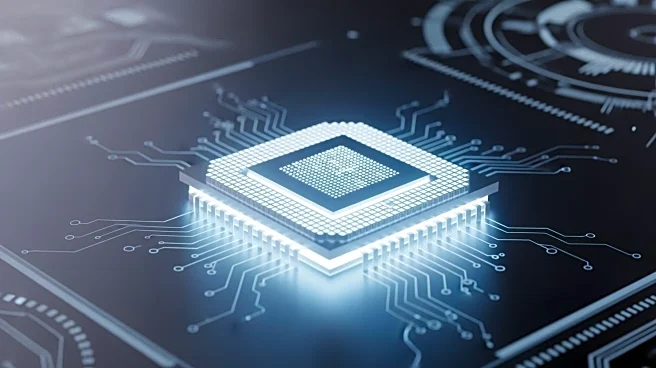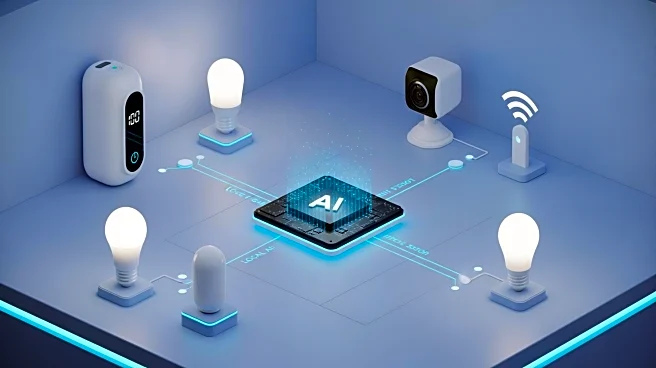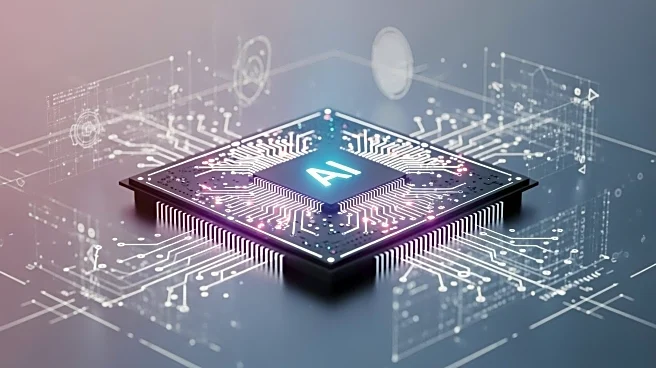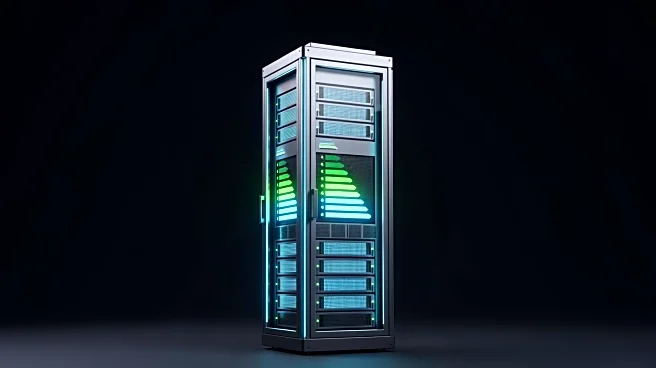What's Happening?
A new photonics chip, developed accidentally, could revolutionize data center technology by managing the increasing data demands of artificial intelligence (AI). This chip generates multicolored laser
beams, known as a frequency comb, which allows for faster and more efficient data transmission compared to traditional single-wavelength laser pulses. The innovation emerged from efforts to enhance lidar technology, where researchers discovered the chip's ability to split light into multiple colors. This breakthrough, published in Nature Photonics, involves a compact silicon chip that uses a multimode laser diode and self-injection locking to stabilize and refine the laser light. The result is a powerful, stable beam that can be split into a multicolored frequency comb, offering a compact and efficient solution for data centers.
Why It's Important?
The development of this photonics chip is significant as it addresses the growing energy demands placed on data centers by AI technologies. By enabling multiple data streams to travel in parallel through a single optical channel, the chip can potentially replace numerous individual lasers, reducing costs and saving space. This advancement could lead to more energy-efficient systems, which is crucial as data centers continue to expand to meet AI's computational needs. The technology also holds promise for other applications, such as portable spectrometers, optical clocks, and advanced lidar systems, indicating a broad impact across various industries.
What's Next?
The next steps involve further refining the technology for practical applications in data centers and other fields. Researchers will likely focus on optimizing the chip's performance and exploring its integration into existing infrastructure. As the technology matures, it could attract interest from companies seeking to enhance their data processing capabilities while minimizing energy consumption. The potential for widespread adoption could drive further innovation in photonics and related technologies.
Beyond the Headlines
This development highlights the potential for accidental discoveries to drive technological advancements. The ability to pack powerful photonics technology into a small chip could lead to significant shifts in how data is managed and transmitted. Additionally, the environmental benefits of reducing energy consumption in data centers align with broader efforts to create more sustainable technology solutions. The innovation also underscores the importance of interdisciplinary research in achieving breakthroughs that can have far-reaching impacts.











